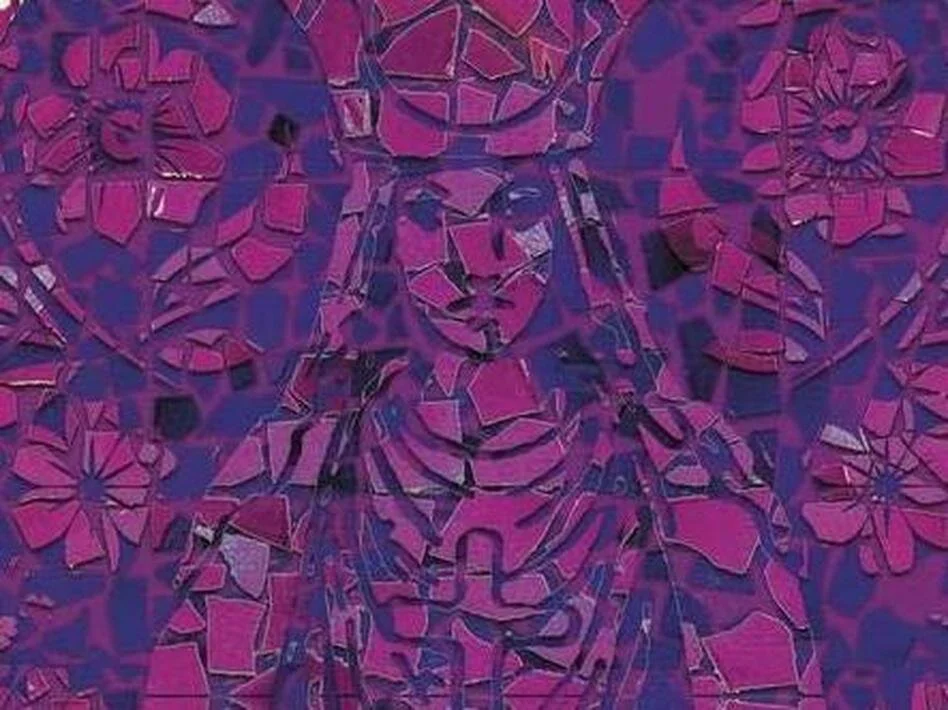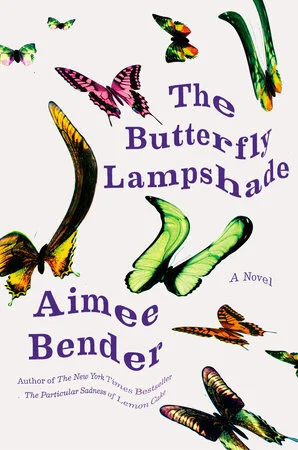The centerpiece of Craig Laurance Gidney’s 2019 novel, A Spectral Hue, is a colony of African-American outsider artists in Shimmer, a small marsh-town in Maryland’s Eastern Shore. Hazel Whitby, a slave girl, sewed frenzied quilts shot through with clashing colors, hidden shapes, and pink-purple thread. Shadrach Grayson, a drifter and one-time circus sideshow, painted bleak marsh landscapes filled with luminous will-o’-the-wisps in that same pink-purple. Other Shimmer artists made dolls, or broken glass sculptures, but all of them work obsessively around that same fuschia or magenta hue, the color of the endemic salt-marsh orchid, or marsh-bell, and to a mysterious feminine presence in the marsh. Is she the spirit of the marsh? The marsh-bell personified? That strange color itself?
Three more characters circle the perimeter of the Shimmer artists. Xavier, an art student writing his thesis on the Shimmer artists, who as a child experienced a transporting vision and lost time while looking at a Whitby quilt. Iris, a Shimmer resident who sees spirits as scraps of color and silhouettes of patterned cloth. Lincoln, a caretaker in the local Whitby-Grayson museum who witnesses the quilts and paintings come alive when the museum is quiet. All three, in fact, share that sensitivity that reveals the Shimmer artwork as animated and magnetic, as both an offering and an accessway to the powerful magenta marsh-spirit. This figure—Our Lady of the Marsh, the Marsh-bell Queen, Fuschia—is a fascinating and ambivalent one, sometimes goddess, sometimes muse, sometimes a hapless girl-ghost who gets stuck inside people’s minds, whose obsessive impulse to create art through her subjects drives them to madness, dissolution, and ruin. “I don’t think there’s anything ‘divine’ about the magenta woman. At all,” one of the captive Shimmer artists says to another. “I think she’s selfish. And vain.”
Fuschia recalls another “greedy ghost” of Black literature, the title character of Toni Morrison’s Beloved—like Fuschia, Beloved is an innocent victim whose extreme pitch of need threatens to devour the living characters from the inside out. And it’s interesting that both of these ghosts are scaffolded by a structure of memory that falls back, first, into the period of slavery just before the Civil War, then bottoms out into a sort of Jungian sub-basement of the Middle Passage, in the holds of the slave ship. A memory of robbed agency, then of an even more primordial abjection. One of the central tensions in Beloved is how much the formerly enslaved protagonist, Sethe, will let that history of abjection define her. (“You got two feet, Sethe, not four,” Paul D. rebukes her.) Beloved as a greedy ghost, then, can be read as an image of Black identity consumed by the memory of the extreme and relentless injustices inflicted on it.
Craig Laurance Gideny (via author website)
But Shimmer’s ghost is different. The Marsh-bell Queen consumes through inspiration: Fuschia drives her acolytes toward destruction via creation, by pouring themselves (their sanity, their life force) into their artworks. And these creations are some of the most compelling imagery Gidney finds. There are Hazel’s quilts and Shadrach’s paintings, each with their superb eerie optical magic, but then the others!—the iridescent dolls, the bottle sculptures, a bizarre and alien calligraphy shot through with magenta, the collages that turn any photo scrap into marsh-bells, they all have a deeply felt democratic instinct about art’s transformative power, how the humblest exercise of arranging the materials and objects at hand into an act of attention to one’s world takes on a kind of magic and holiness. Albeit a magic that is not entirely stable, and a holiness that is not necessarily benign.
And maybe that set of images—outsider artists piecing together beauty from their scraps at the margins—has a political symbolism, a sort of redemptive answer to Beloved’s image of consuming history. I don’t know if that holds up; it’s a little perilous, after all, for a white guy to run these sorts of extrapolations. That’s me as a critic, looking to reduce the story to a meaning that travels in a certain direction, describes a certain arc. As a reader, the sense I get is less of art in time than of art in space—less Nacheinander, more Nebeneinander—like a canvas that can be explored along any number of spatial axes. In A Spectral Hue, characters with rich conflicts and backstories abound, but they’re not so much an engine of a story that achieves its effect over a progression of events as material for juxtaposition and tension. The way Lincoln’s past meth addiction carries images of dissipation and compulsion that inform the hold Fuschia has over her artists, for example. Or take the church of Black Gnosis—a New Agey group that Iris’s aunt belonged to, mentioned in passing in Iris’s flashbacks—and how it suggests images of a Black divine feminine. None of these details “pay off” in plot currency, but they reveal more dimension and texture to the world. In his review for NPR, Jason Heller likened this structure to the radial symmetry of petals on a flower. I think that’s apt, but a painting seems just as useful an analogy.
That suggests it’s a mistake to collapse the images of the Shimmer artists for the sake of a message or moral. And it suggests the final, uneasy scene that brings Xavier, Iris, and Lincoln together isn’t really a climax that settles Fuschia’s nature, so much as as the farthest edge of the painting, with all the ambivalence and mystery rioting in the center.













In this final novel of The Daevabad Trilogy, Ali, Nahri, and Dara are morally challenged beyond endurance by the rise of death magic in their beloved kingdom. How they respond changes everything.